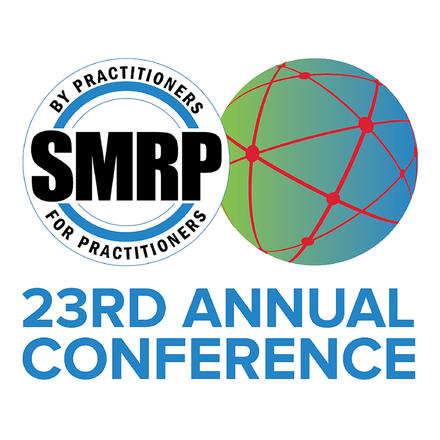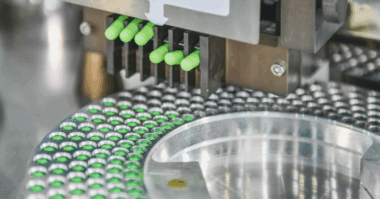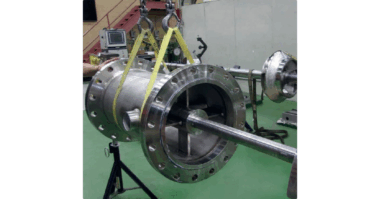Part Three in a Series
By Michelle Segrest
Reporting for Empowering Pumps
The Foundation for Industrial Maintenance Excellence (FIME) organization is dedicated to the recognition of maintenance and reliability as a profession. At the 2015 SMRP Conference in Cincinnati, Ohio (Oct. 13-15, 2015), an expert panel of FIME leaders fielded insightful questions on how to improve operational excellence through maintenance and reliability program improvements.
The panel included moderator, Stan Grabill, FIME Chairman and experts Leon Johnson of 3M, Larry Funke of Baxter Healthcare, Barry Quinn of Emergent BioSolutions and Richard Cole of Frito-Lay. All of the expert panelists run successful maintenance programs at their facilities. Here is a sampling of the questions and answers from the panel.
Q: When influencing an entire organization, often there are leaders controlling the purse strings who do not have M&R or an operations background. How do you sell them on proposition of good maintenance and reliability programs and effective asset management?
A: This is difficult, but one idea is to develop a team of international advisory members representing multiple plants to discuss a strategy of how to sell an M&R program. This can also be explored from a capacity standpoint by looking at ways to improve uptime and increase capacity. If we can show this, we can justify a need for continuous maintenance and reliability improvements. Maintenance is often recognized as a cost, so the challenge is to break that paradigm and show the benefits of a highly reliable plant. Cost cutting is important and maintenance can be a target for this. One successful solution was piloting one site where we spent 18 months installing lean and six sigma processes and standardized KPIs. Through that process, results became apparent—cost was reduced by 17 percent and productivity nearly doubled. Leadership will pay attention to this kind of results.
Q: How effective is it to employ influence from grass roots experiences rather than driving from the top down?
A: Building fundamentals and KPIs can help to drive performance. Find the opportunities and build a path. Try to find a way to get support. Sometimes it only takes one person. From a business standpoint, it’s a good idea to build a group that is passionate about reliability and maintenance excellence. Then pick a site or location or area where the passion will help show energy and effort and produce quick wins. For example, maybe focus on a PM program and show some results. Then you can build from that.
Q: How do you move a program forward over a long period of time (maybe 10 years) when there are multiple changes in leadership?
A: Use organizations like FIME to develop a strategic program and give direction. Also, consider bringing in a consultant to help drive a pilot program. Once success shows, leadership pulls in and will be inspired to deploy the same program to other facilities.
Q: How do you sustain the excellence and best practices over a long period of time when new ideas come in from new leadership, specifically for Predictive Maintenance?
A: Leadership support and alignment in plant engineering is extremely important in maintaining effective maintenance programs. Identify and recognize maintenance excellence in the plant and promote those people to management. Operations managers will listen to opportunities for improvement. Sometimes change happens and capital is cut. When there are good times, plan for the tough times. Increase the number of mechanics and develop their technical skills. Bring in interns and train them, then they may end up being great operators. When cuts happen, you will have enough skilled operators to leverage the capabilities. Use predictive maintenance tools to increase efficiency.
Q: When you have a site in a reactive mode, how can you switch to a proactive mode?
A: Failure analysis can be the greatest tool for this. A good root cause analysis and documentation of failures is the foundation and then building PMs will help to make that shift. Use “voice of the machine” and “voice of the customer” and “voice of maintenance.” Use daily tier reviews to discuss the previous 24 hours. The people can make it happen. To react takes four times more energy and effort. Incorporating a very strong PM program can help. Collect the data and determine where your biggest problems are present. Pick the significant few and focus on where you can find results. You have to start somewhere and attack a few processes to begin building a structure.
Q: How can you now justify sustaining and improving once you reach a plateau in uptime?
A: Focus becomes on how to develop the future leaders to spread the successful programs to other sites and facilities. As you get better, you need to continue the partnership with operations. Make sure critical equipment is monitored. At the end of the day, you want to optimize. It’s an evolution. You never really get there. There are changes in leadership and changes in technology. Continue to focus on where the business value lies and how to drive the efficiency.
About FIME and the NAME Award
FIME sponsors the North American Maintenance Excellence (NAME) Award, which is an annual program that recognizes North American organizations that excel in performing the maintenance process to enable operational excellence. It was established in 1991 as a non-profit. Many industries including chemical, food processing, mining, biomedical, and healthcare industries were represented on the panel of experts, who were all past winners of the award.
The objectives of the NAME Award are:
1) Increase the awareness of maintenance as a competitive edge in cost, quality, reliability, service, and equipment performance.
2) Identify industry leaders, along with potential or future leaders, and highlight best practices in maintenance management.
3) Share successful maintenance strategies and the benefits derived from implementation.
4) Understand the need for managing change and stages of development to achieve maintenance and reliability excellence.
5) Enable operational excellence.
Winners of the NAME award are site specific. Some years there are no winners and some years there are two or three winners. It’s a rigorous process, but those who qualify earn the award.




